
How to Use Arduino UNO R4 Minima: Examples, Pinouts, and Specs
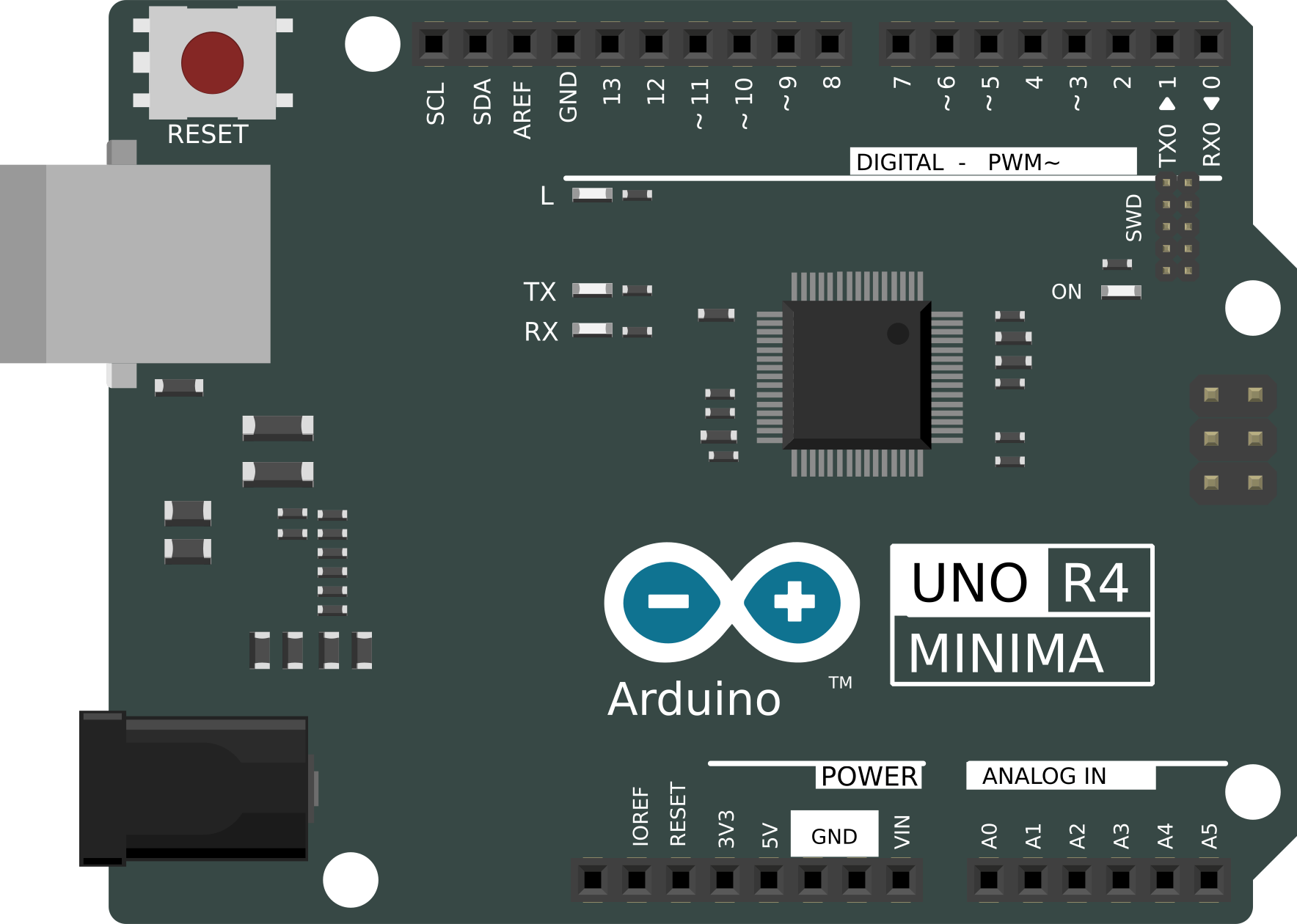
 Design with Arduino UNO R4 Minima in Cirkit Designer
Design with Arduino UNO R4 Minima in Cirkit DesignerIntroduction
The Arduino UNO R4 Minima is a compact and versatile microcontroller board based on the ATmega328P. It is designed to simplify programming and prototyping for a wide range of applications. With its digital and analog input/output pins, USB connectivity, and compatibility with numerous sensors and modules, the UNO R4 Minima is an excellent choice for both beginners and experienced developers.
Explore Projects Built with Arduino UNO R4 Minima
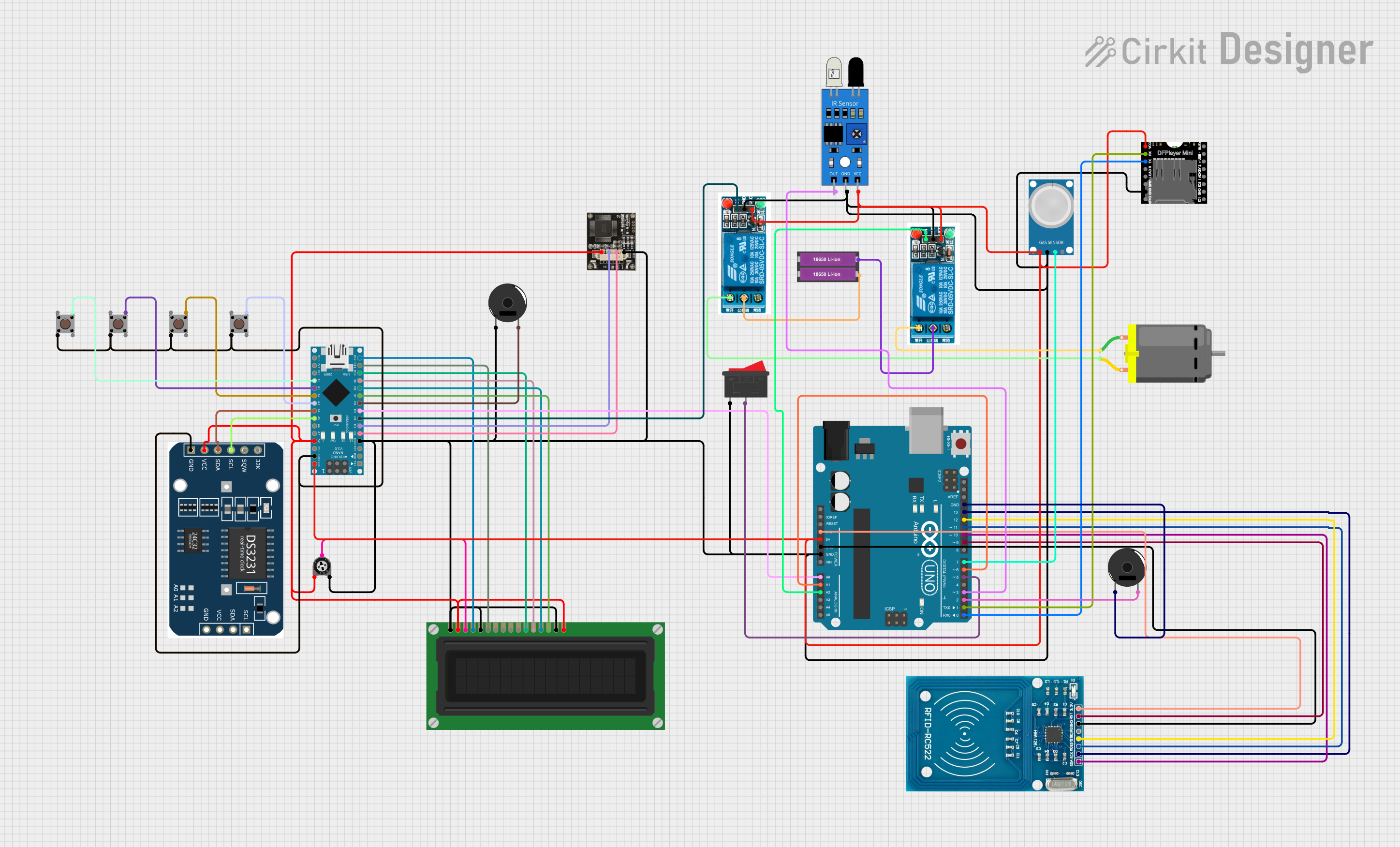
 Open Project in Cirkit Designer
Open Project in Cirkit Designer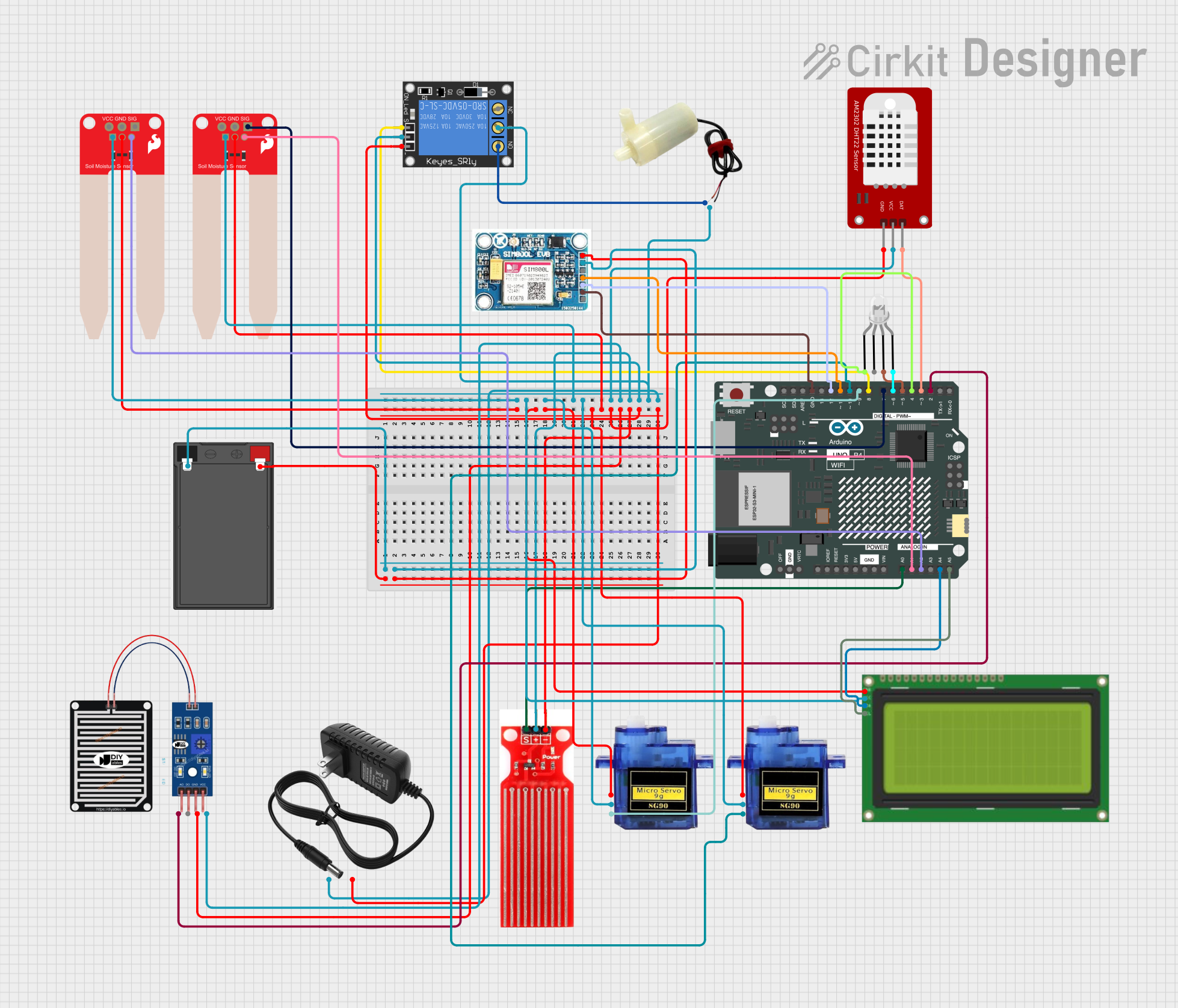
 Open Project in Cirkit Designer
Open Project in Cirkit Designer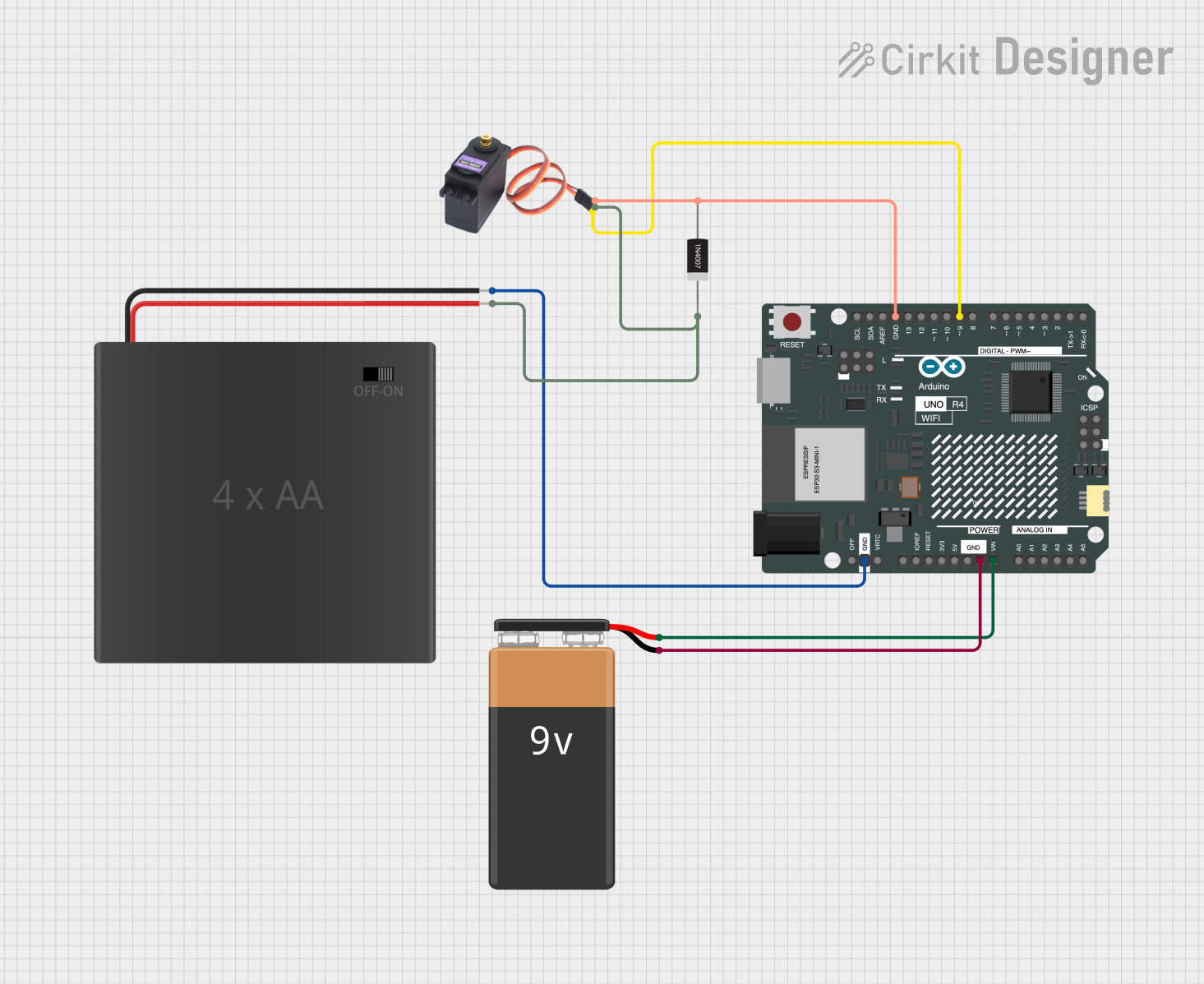
 Open Project in Cirkit Designer
Open Project in Cirkit Designer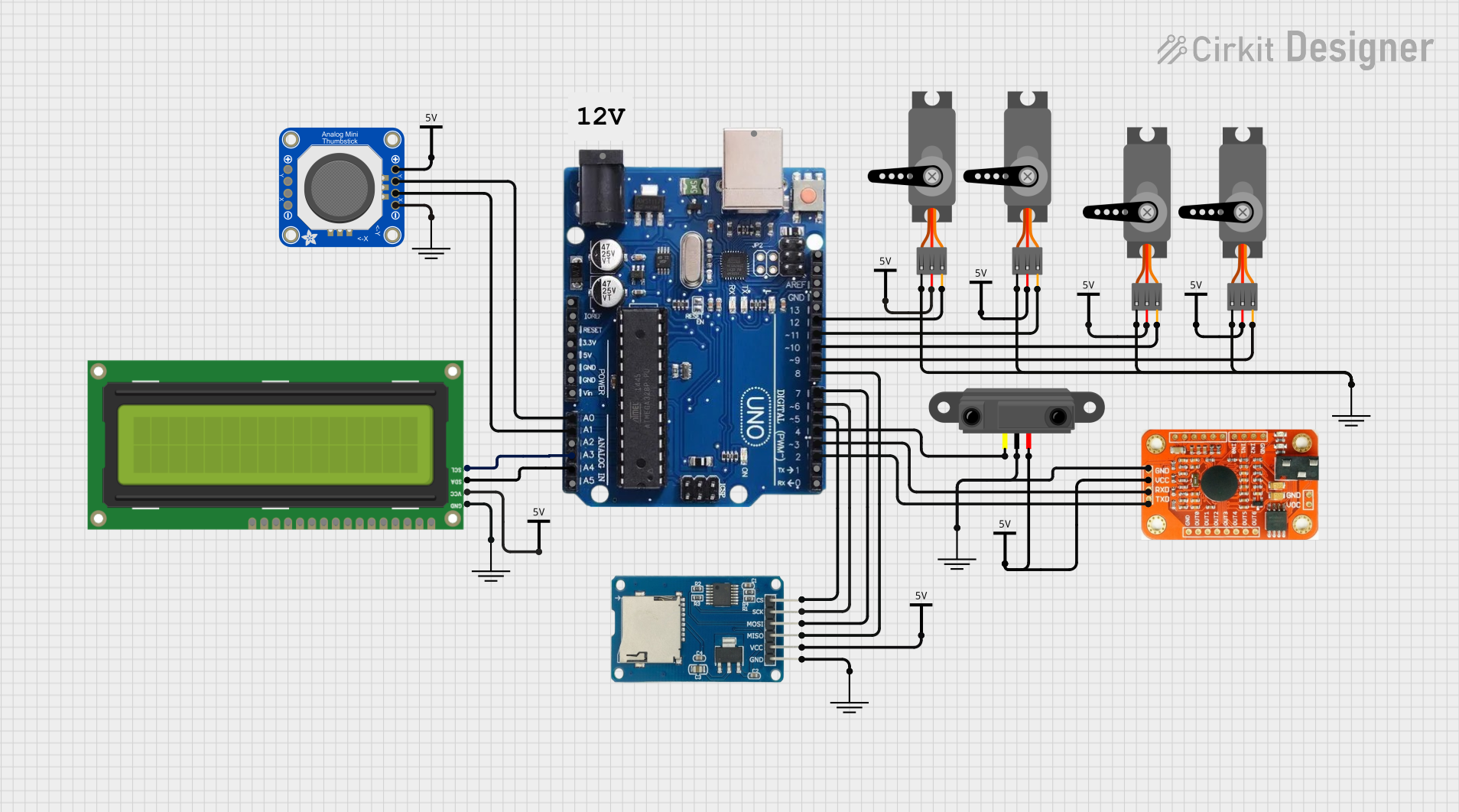
 Open Project in Cirkit Designer
Open Project in Cirkit DesignerExplore Projects Built with Arduino UNO R4 Minima

 Open Project in Cirkit Designer
Open Project in Cirkit Designer
 Open Project in Cirkit Designer
Open Project in Cirkit Designer
 Open Project in Cirkit Designer
Open Project in Cirkit Designer
 Open Project in Cirkit Designer
Open Project in Cirkit DesignerCommon Applications and Use Cases
- DIY Electronics Projects: Ideal for hobbyists building custom circuits and devices.
- Prototyping: Used by engineers and developers to test and iterate designs.
- Educational Purposes: Widely used in schools and universities for teaching programming and electronics.
- IoT Applications: Can be integrated with sensors and modules for Internet of Things projects.
- Robotics: Frequently used in robotic systems for motor control and sensor integration.
Technical Specifications
Key Technical Details
- Microcontroller: ATmega328P
- Operating Voltage: 5V
- Input Voltage (recommended): 7-12V
- Input Voltage (limit): 6-20V
- Digital I/O Pins: 14 (6 of which provide PWM output)
- Analog Input Pins: 6
- DC Current per I/O Pin: 20 mA
- Flash Memory: 32 KB (0.5 KB used by bootloader)
- SRAM: 2 KB
- EEPROM: 1 KB
- Clock Speed: 16 MHz
- USB Connectivity: USB Type-B port for programming and power
- Dimensions: 68.6 mm x 53.4 mm
- Weight: Approximately 25 g
Pin Configuration and Descriptions
The Arduino UNO R4 Minima features a total of 28 pins, including digital, analog, power, and communication pins. Below is a detailed breakdown:
Digital Pins
| Pin Number | Functionality | Description |
|---|---|---|
| D0 - D1 | UART (RX, TX) | Serial communication pins |
| D2 - D13 | Digital I/O | General-purpose digital input/output |
| D3, D5, D6, D9, D10, D11 | PWM Output | Pulse-width modulation for motor control or LEDs |
Analog Pins
| Pin Number | Functionality | Description |
|---|---|---|
| A0 - A5 | Analog Input | Reads analog signals (0-5V) |
Power Pins
| Pin Name | Functionality | Description |
|---|---|---|
| VIN | Input Voltage | External power input (7-12V recommended) |
| 5V | Regulated 5V Output | Powers external components |
| 3.3V | Regulated 3.3V Output | Powers low-voltage components |
| GND | Ground | Common ground for the circuit |
| RESET | Reset | Resets the microcontroller |
Communication Pins
| Pin Name | Functionality | Description |
|---|---|---|
| SDA | I2C Data | Data line for I2C communication |
| SCL | I2C Clock | Clock line for I2C communication |
| RX | UART Receive | Receives serial data |
| TX | UART Transmit | Transmits serial data |
Usage Instructions
How to Use the Arduino UNO R4 Minima in a Circuit
Powering the Board:
- Connect the board to your computer using a USB Type-B cable for programming and power.
- Alternatively, use an external power supply (7-12V) via the VIN pin or DC barrel jack.
Programming the Board:
- Install the Arduino IDE from the official website.
- Select "Arduino UNO" as the board type in the IDE.
- Write your code in the IDE and upload it to the board via the USB connection.
Connecting Components:
- Use the digital pins for on/off signals or PWM output.
- Use the analog pins to read sensor data (e.g., temperature, light).
- Connect external modules (e.g., LCDs, motors) to the appropriate pins.
Important Considerations and Best Practices
- Voltage Levels: Ensure that connected components operate within the 5V or 3.3V range to avoid damage.
- Current Limits: Do not exceed 20 mA per I/O pin or 200 mA total for the board.
- Static Electricity: Handle the board carefully to avoid static discharge, which can damage the microcontroller.
- Code Optimization: Use efficient code to minimize memory usage, especially for large projects.
Example Code for Arduino UNO R4 Minima
The following example demonstrates how to blink an LED connected to pin 13:
// Blink an LED connected to pin 13
// This code toggles the LED on and off every second.
void setup() {
pinMode(13, OUTPUT); // Set pin 13 as an output
}
void loop() {
digitalWrite(13, HIGH); // Turn the LED on
delay(1000); // Wait for 1 second
digitalWrite(13, LOW); // Turn the LED off
delay(1000); // Wait for 1 second
}
Troubleshooting and FAQs
Common Issues and Solutions
The board is not detected by the computer:
- Ensure the USB cable is properly connected and functional.
- Check if the correct COM port is selected in the Arduino IDE.
- Install or update the necessary USB drivers.
Code does not upload to the board:
- Verify that the correct board type ("Arduino UNO") is selected in the IDE.
- Press the RESET button on the board before uploading the code.
- Ensure no other program is using the COM port.
Components connected to the board are not working:
- Double-check the wiring and connections.
- Ensure the components are compatible with the board's voltage and current limits.
- Test the components individually to rule out hardware issues.
FAQs
Q: Can I power the Arduino UNO R4 Minima with a battery?
A: Yes, you can use a 9V battery connected to the VIN pin or DC barrel jack.Q: Is the Arduino UNO R4 Minima compatible with shields?
A: Yes, it is compatible with most Arduino UNO shields.Q: How do I reset the board?
A: Press the RESET button on the board or connect the RESET pin to GND momentarily.Q: Can I use the board for wireless communication?
A: Yes, you can connect wireless modules like Bluetooth or Wi-Fi via the digital or communication pins.
This documentation provides a comprehensive guide to using the Arduino UNO R4 Minima effectively. For further assistance, refer to the official Arduino documentation.